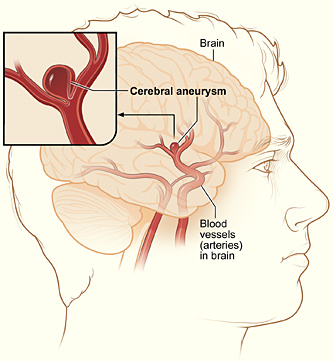The unfortunate event of a mother’s passing as a result of brain aneurysm now serves as a warning for people to never ignore any sudden and severe headaches they may experience.
The thing is that the brain aneurysm may take place with little to no warning and people often misdiagnose it with migraine.
But for 41-year-old Lee Broadway from North Carolina this condition resulted with a fatal outcome, and now her family is urging others to pay closer attention to the changes they experience in their bodies in order to prevent any serious consequences.

Lee suffered from migraine most of her life and she got used to the pain over time. But that day was different. She was feeling so bad that she had to call her husband and ask him to get home as quickly as he could and bring her to hospital.
Eric, Lee’s husband, later said how his wife described her situation as “the worst headache of her life.”

Eric rushed Lee to the ER, but he was aware something serious was in question.
“I knew this couldn’t be good because I’ve seen her deal with pain before,” he told People Magazine.
Only two days after she was admitted to hospital, Lee passed away and Eric and tiher four children were devastated.

Although identifying the warning signs of brain aneurysm can be challenging, doctors are trying to raise awareness of the consequences by teaching the public about some of the symptoms of this life-threatening condition.
Mayo Clinic states that “A brain aneurysm is a bulge or ballooning in a blood vessel in the brain. It often looks like a berry hanging on a stem.
A brain aneurysm can leak or rupture, causing bleeding into the brain (hemorrhagic stroke). Most often a ruptured brain aneurysm occurs in the space between the brain and the thin tissues covering the brain. This type of hemorrhagic stroke is called a subarachnoid hemorrhage.”

They further list some of the most common symptoms people should be aware of such as:
-
- Sudden, extremely severe headache
- Nausea and vomiting
- Stiff neck
- Blurred or double vision
- Sensitivity to light
- Seizure
- A drooping eyelid
- Loss of consciousness
- Confusion
A leaking aneurysm often precedes a rupture and can result in an excruciating headache.

Many times, the brain aneurysm may cause problems even before it leaks. In cases like this, seeking medical help may lead to early detection and prevention of rupturing.
If the aneurysm is large it may press the nerves or the brain tissue and cause some of the following symptoms:
- Pain above and behind one eye
- A dilated pupil
- Change in vision or double vision
- Numbness of one side of the face
According to the doctors who treated Lee, her condition was initially not considered that serious and after the surgery the family was told she was going to pull through, but she later bled out and was considered brain dead as a result of postoperative complications.
“I ran out and lost it,” said Eric.

The reasons for brain aneurysm to form are still unknown but doctors believe older people and women are at higher risk of developing one. Further, they say how other categories who may develop one over time are heavy smokers, drug and alcohol abusers, and people with high blood pressure.
Brain aneurysm can also occur after a person experiences a head injury or certain blood infections. Some are even born with it.
If you or someone you know experiences severe headaches or any other of the symptoms listed above, urge them to visit a doctor.
